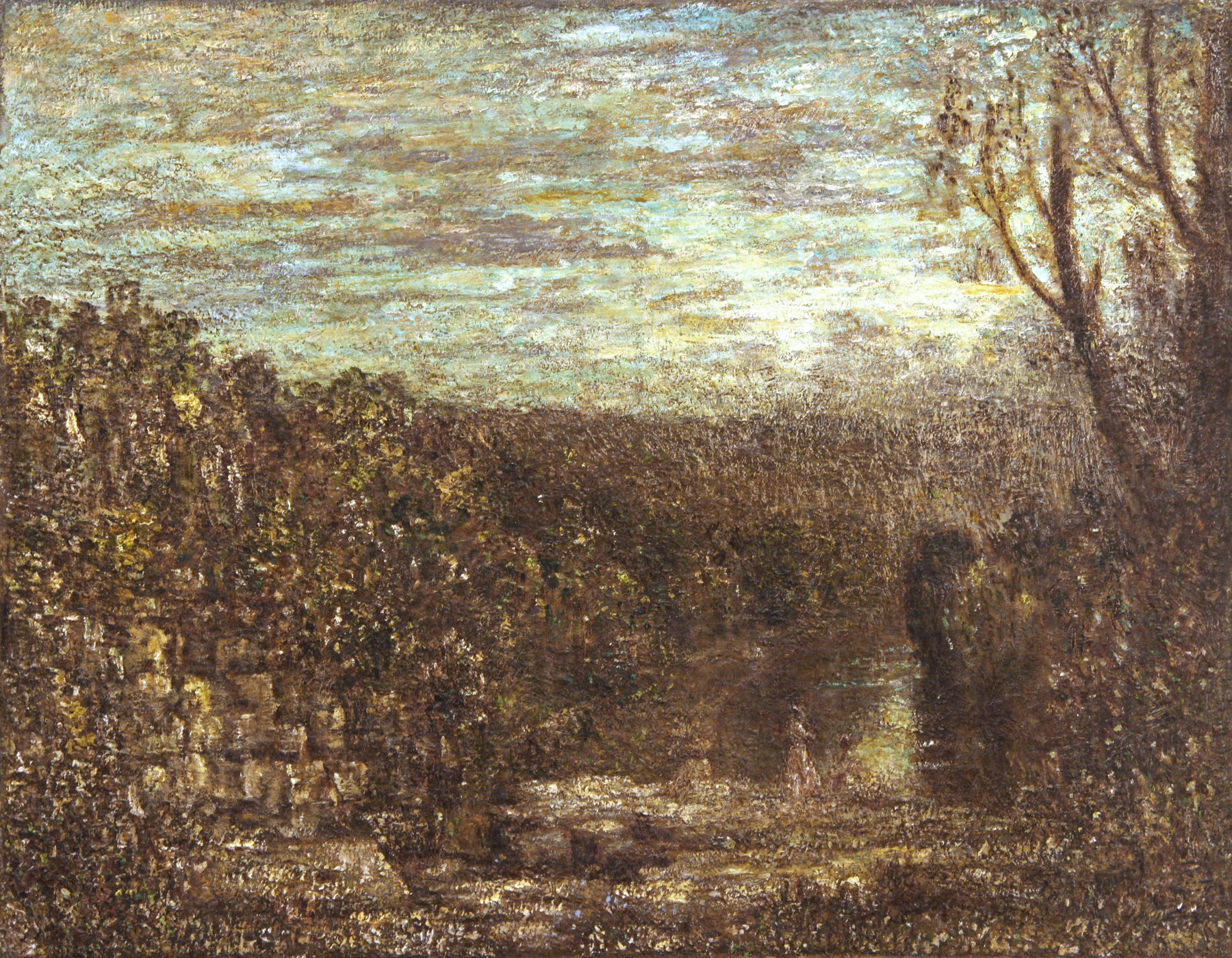
(click image to enlarge)
Painted circa 1898-99, it was possibly not completed until 1914.
By 1900, Philip Wilson Steer was busy rehearsing the native tradition of landscape painting. Following in the footsteps of J M W Turner, he explored Yorkshire and then the Welsh borders – including the valleys of the Severn, Teme and Wye. Turner’s sketchbooks reveal that he had worked in Ludlow, on the Teme, in 1798, and Steer first arrived there exactly a century later.
Yet, despite this homage, many of Steer’s paintings of Ludlow reveal the influence of another, Continental and more contemporary, artist. The isolated French Romantic painter, Adolphe Monticelli (1824-1886), was very fashionable in London at the turn of the century, and especially for his unusual technique and chromatic palette, which together had anticipated aspects of Impressionism and other later trends. For instance, D S McColl, the leading critic and champion of Steer, praised Monticelli’s ‘gem-like’ encrustations. When Steer set about producing A View at Ludlow, he clearly had Monticelli’s technique in mind, as he had three works by the artist in his own collection. While he based the composition on his earlier Cliffs by the Teme, Ludlow, he rejected its fluid treatment in favour of a rich impasted handling, and achieved it through a combination of brush, brush handle and palette knife.
According to Bruce Laughton, ‘There were basically two different views from the bank of the River Teme that interested Steer, one looking into a left-hand bend and the other into a right-hand bend’ (Philip Wilson Steer 1860-1942, Oxford: Clarendon Press, 1971, page 94). The recurring motif of a small forked tree suggests to Laughton that Steer concentrated on the right-hand view over a period of two years, 1898-1900. A View at Ludlow would seem to one of the later interpretations, in which the tree has been obscured, and the topography generally distilled. Given that the catalogue raisonné by Alfred Yockney (included in McColl’s monograph of Steer) dates the painting to 1914, the artist may have worked on it across three decades, returning to the canvas to build up layers in a loving, almost obsessional fashion. If the approach to painting that Ludlow offered Steer seemed at first both retrospective and immediate, it instead became experimental and drenched in memory.